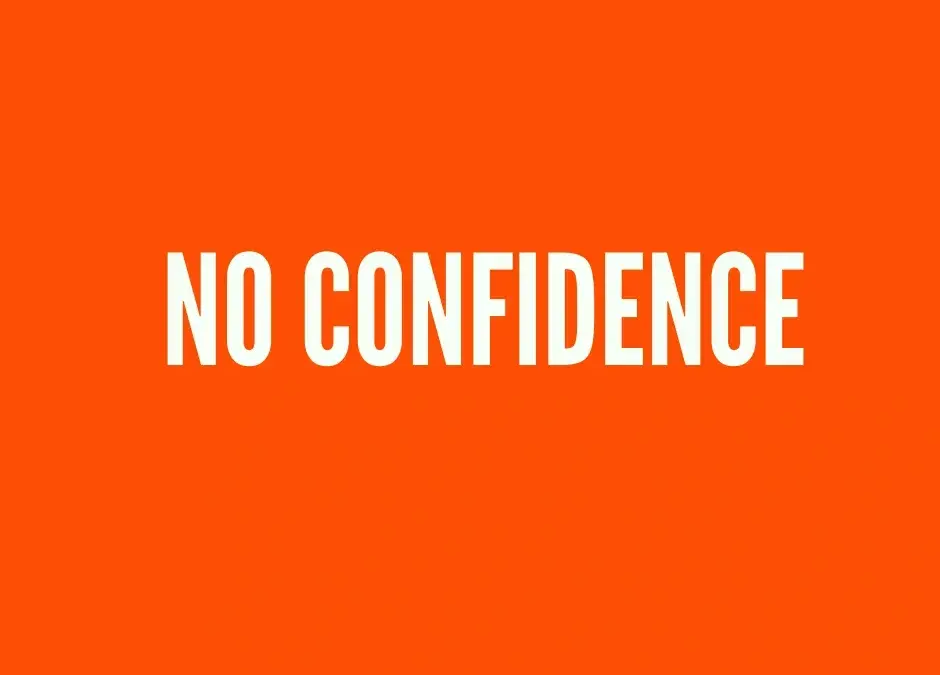
by Robyn Bolton | Aug 14, 2024 | Innovation, Tips, Tricks, & Tools
In 2020, the International Standards Organization, most famous for its Quality Management Systems standard, published ISO 56000, Innovation Management—Fundamentals and Vocabulary. Since then, ISO has released eight additional innovation standards.
But is it possible to create international standards for innovation, or are we killing creativity?
That’s the question that InnoLead founder and CEO Scott Kirsner and I debated over lunch a few weeks ago. Although we had heard of the standards and attended a few webinars, but we had never read them or spoken with corporate innovators about their experiences.
So, we set out to fix that.
Scott convened an all-star panel of innovators from Entergy, Black & Veatch, DFW Airport, Cisco, and a large financial institution to read and discuss two ISO Innovation Standards: ISO 56002, Innovation management – Innovation management systems – Requirements and ISO 56004, Innovation Management Assessment – Guidance.
The conversation was honest, featured a wide range of opinions, and is absolutely worth your time to watch.
Here are my three biggest takeaways.
The Standards are a Good Idea
Innovation doesn’t have the best reputation. It’s frequently treated as a hobby to be pursued when times are good and sometimes as a management boondoggle to justify pursuing pet ideas and taking field trips to fun places.
However, ISO Standards can change how innovation is perceived and supported.
Just as ISO’s Quality Management Standards established a framework for quality, the Innovation Management Standards aim to do the same for innovation. They provide shared fundamentals and a common vocabulary (ISO 56000), requirements for innovation management systems (ISO 56001 and ISO 56002), and guidance for measurement (ISO 56004), intellectual property management (ISO 56005), and partnerships (ISO 56003). By establishing these standards, organizations can transition innovation from a vague “trust me” proposition to a structured, best-practice approach.
The Documents are Dangerous
However, there’s a caveat: a little knowledge can be dangerous. The two standards I reviewed were dense and complex, totaling 56 pages, and they’re among the shortest in the series. Packed with terminology and suggestions, they can overwhelm experienced practitioners and mislead novices into thinking they have How To Guide for success.
Innovation is contextual. Its strategies, priorities, and metrics must align with the broader organizational goals. Using the standards as a mere checklist is more likely to lead to wasted time and effort building the “perfect” innovation management system while management grows increasingly frustrated by your lack of results.
The Most Important Stuff is Missing
Innovation is contextual, but there are still non-negotiables:
- Leadership commitment AND active involvement: Innovation isn’t an idea problem. It’s a leadership problem. If leadership delegates innovation, fails to engage in the work, and won’t allocate required resources, you’re efforts are doomed to fail.
- Adjacent and Radical Innovations require dedicated teams: Operations and innovation are fundamentally different. The former occurs in a context of known knowns and unknowns, where experience and expertise rule the day. The latter is a world of unknown unknowns, where curiosity, creativity, and experimentation are required. It is not reasonable to ask someone to live in both worlds simultaneously.
- Innovation must not be a silo: Innovation cannot exist in a silo. Links must be maintained with the core business, as its performance directly impacts available resources and influences the direction of innovation initiatives.
These essential elements are mentioned in the standards but are not clearly identified. Their omission increases the risk of further innovation failures.
Something is better than nothing
The standards aren’t perfect. But one of the core principles of innovation is to never let perfection get in the way of progress.
Now it’s time to practice what we preach by testing the standards in the real world, scrapping what doesn’t work, embracing what does, and innovating and iterating our way to better.

by Robyn Bolton | Jul 17, 2024 | Innovation, Leadership, Strategy
The quest for immortality is as old as humankind. From King Gilgamesh in 2100 BCE to Jeff Bezos and Larry Page, the only thing that stops our pursuit of longevity is death. So why don’t we apply this same verve and vigor to building things that last forever? Why don’t we invest in corporate longevity?
Consider this—in the last 80 years, human life expectancy increased by almost 30% while corporate life expectancy declined by almost 500%. Other research indicates that the average company’s lifespan on the S&P 500 Index dropped from 60 years in 1960 to just under 15 years in 2024.
We spend billions on products to slow, stop, and even reverse aging. Yet, according to the New York Times, there are just seven keys to living longer.
Could achieving corporate longevity possibly be just as simple?
Yes.
Here are 5 keys to corporate longevity.
1. Take care of yourself today AND invest for tomorrow
We all know what we should do to stay healthy. But one night, you don’t sleep well, and hearing your 5:00 am alarm is physically painful. What harm is there in skipping just one workout? At work, you had a bad quarter, so cutting the research project or laying off the innovation team seems necessary. After all, if you don’t save today, there won’t be a tomorrow, right?
Right. But skipping workouts becomes a habit that can bring your retirement plans crashing down. Just like cutting investments in R&D, innovation, and next-gen talent makes keeping up with, adapting, and growing in a rapidly changing world impossible.
2. Build and nurture relationships. Inside AND outside your company
According to the Harvard Study of Adult Development, strong relationships lead to happier and healthier lives and are the biggest predictor of well-being. Turns out relationships are also good for business.
Strategic alliances and partnerships directly grow revenue. For example, 95% of Microsoft’s commercial revenue comes from its partner ecosystem. Starbucks’ collaboration with Nestle allowed the coffee chain to expand its presence in people’s lives while Nestle gained access to a growing category without the cost of building its own brand. There’s a reason that Andreessen Horowitz declared partnerships a “need to have” in today’s world.
3. Everything in moderation
Toddlers are the only people more distracted by shiny objects than executives. Total Quality Management. Yes, please. Disruptive Innovation. Absolutely. Agile. Thank you, I’ll take two.
Chasing new ideas isn’t wrong. It’s how you chase them that’s dangerous. Uprooting your existing processes and forcing everyone to immediately adopt Agile is the corporate equivalent of a starvation diet. You’ll see immediate improvements, but long-term, you’ll end up worse off.
4. Eliminate bad habits (and bad people)
“The culture of any organization is shaped by the worse behavior the leader is willing to tolerate.”
Read that again. Slowly.
To live longer, stop engaging in, tolerating, and justifying bad habits. To make your company live longer, stop tolerating and justifying people and behaviors that contradict your company’s culture. Eliminating bad behavior is tough, but it’s the only way to get to your goal. In life and in business.
5. Rest
Getting 7-8 hours of sleep a night adds years to your life. Less than five hours doubles your dementia risk. More sleep also boosts your productivity and creativity at work.
The latest example of rest’s power is the four-day workweek. In 2022, 61 UK companies adopted it without any changes in pay. Two years later, 54 still have the policy, and over 30 made it permanent. Other companies, like Microsoft in Japan, reported productivity increases of more than 40%.
What will you unlock with these keys?
As a leader, you have the power to build a legacy and a company that thrives for generations. But that only happens if you channel the same energy into achieving corporate longevity that you put into pursuing a longer, healthier life.
By embracing the keys of corporate longevity—caring for today while investing in tomorrow, nurturing relationships, practicing moderation, eliminating bad habits, and prioritizing rest—you’ll build businesses that endure.
The journey to corporate immortality starts with a single step. What’s yours?

by Robyn Bolton | Jul 10, 2024 | Leadership
“Trust no one. Suspect everyone.” Great advice if you’re an MI6 agent trying to uncover a spy at the height of the Cold War. Not great advice if you’re a senior executive responsible for leading a team to deliver record results. So, when a report titled “Leadership Confidence Falls to Three-Year Low” was published, I hoped it was clickbait. So I clicked.
Things only got worse.
While two-thirds of CEOs believe that their teams role model the right culture and behaviors, work together effectively as a team, and effectively embrace change, everyone else disagrees. Only about half the C-suite believes their teams work together well, are role models, and embrace change. The lower in the organization you go, the lower those percentages get.
Why confidence is at an all-time low
In a word – change. Neither humans nor financial markets like change, and that’s all we’ve experienced for the past four years. “From the conflicts in Ukraine and the Middle East and their destabilizing effects on the world, to inflation, rising interest rates, and the launch of ChatGPT igniting massive interest in generative AI, the leadership landscape has been far from quiet. What’s more, nearly half of the world’s population is set to head to the polls for what many are calling a ‘super election year.’”
None of this is the executive team’s fault, but the relentless nature of depressing and destabilizing news wears everyone down. As a result, people have less patience and empathy and are quicker to anger, judge, and blame others. Senior execs are people, too. And they’re taking their exhaustion out on the people they spend the most time with – their teams.
What you can do about it
If you have the power to stop the wars, improve the financial markets, quell GenAI fears, and ensure that democracy reigns, please use that power now. (Also, what have you been waiting for?)
If you do not have such powers, there is still something you can do: Build trust.
Researchers found that leaders of high-performing organizations are 8x more likely to feel that their teams practice and role model high levels of trust in all their interactions across the organization. But the teams won’t practice and role model trust if you don’t set the example through:
- Inclusive, transparent, and vulnerable communication – Most of us grew up in cultures where information is power, so it is hard to build a habit of sharing information with everyone on the team, especially if it isn’t good news. But if you want your people to work together as a team, you can’t create cliques or pick and choose the information you share. There is no trust where there are Haves and Have Nots.
- Lead by listening and collaborating – In case you haven’t noticed, command and control styles of management don’t work anymore. The people on your teams are experienced adults with good ideas. Treat them like adults, value their experience, and listen to their ideas. You’ll be pleasantly surprised by what you hear and earn.
- Be consistent – If one of the causes of the problem is change and you want to be part of the solution, do the opposite – be consistent. Yes, things can change, but who you are, the values you role model, and how you treat people shouldn’t. When things change (and they will), remember that decisions made with data should only be unmade with data. Then, communicate those changes broadly, transparently, and honestly (see #1)
What will you do about it?
Rebuilding trust within your team isn’t a quick fix; it’s an ongoing process that requires commitment and consistency. By being transparent, authentic, and reliable, fostering open communication, and empowering your team, you can create a high-trust environment that drives success.
What steps are you taking to (re)build trust within your teams? Share your thoughts and let’s navigate this journey together. Remember, trust is the glue that holds your team together and propels your organization forward.

by Robyn Bolton | Jun 26, 2024 | Innovation, Leadership, Strategy
It’s not easy leading innovation. Especially these days. You need to do more with less. Take risks while guaranteeing results. Keep up with competition through incremental innovation and redefine the industry with radical and disruptive innovation. It’s maddening. Until you find the Goldilocks Zone of adjacent innovation.
Adjacent Innovation: From Middle Child to Just Right
As HBS Professor Regina E. Herzlinger and her co-authors point out in a recent HBR article, the US is in the midst of an innovation crisis. The cost of lost productivity, estimated at over $10 trillion between 2006 and 2018, is a stark reminder of the economic consequences of a lack of innovation. This figure, equivalent to $95,000 per US worker, should serve as a wake-up call to the importance of innovation in driving economic growth.
The authors identify the root cause of this loss as the ‘polarized approach companies take to innovation.’ While companies focus on incremental innovation, the safe and reliable oldest child of the innovation family, the VCs chase after radical, transformative innovations, the wild, charismatic, free-spirited youngest child. Meanwhile, adjacent innovation – new offerings and business models fo existing customers or new customers for existing offerings and business models – is, like the middle child, too often overlooked.
It’s time to rediscover it. In fact, it’s also time to embrace and pursue it as the most promising path back to growth. While incremental innovation is safe and reliable, it’s also the equivalent of cold porridge. Radical or transformative innovation is sexy, but, like hot porridge, it’s more likely to scorch than sustain you. Adjacent innovation, however, is just right – daring enough to change the game and leapfrog the competition and safe enough to merit investment and generate short-term growth.
Proof in the Porridge: 4x the returns in ½ the time
Last year, I worked with an industrial goods company. Their products aren’t sexy, and their brands are far from household names, but they make the things that make America run and keep workers (and the public) safe. The pandemic’s supply chain disruptions battered their business, and their backlog ballooned from weeks to months and even years. Yet amidst these challenges, they continued to look ahead, and what they saw was a $6M revenue cliff that had to be filled in three years and a product and innovation pipeline covered in dust and cobwebs.
From Day 1, we agreed to focus on adjacent innovation. For four weeks, we brainstormed, interviewed customers, and analyzed their existing offerings and capabilities, ultimately developing three concepts – two new products for existing customers and one existing product repositioned to serve a new customer. After eight more weeks of work, we had gathered enough data to reject one of the concepts and double down on the other two. Three months later, the teams had developed business cases to support piloting two of the concepts.
It took 6 months to go from a blank piece of paper to pilot approval.
It took just another 12 months to record nearly $25M in new revenue.
Those results are more than “just right.”
Be Goldilocks. Pursue Adjacent Innovation
Every organization can pursue adjacent innovation. In fact, most of the companies we consider amongst the world’s “Most Innovative” have that reputation because of adjacent innovation.
How will you become your organization’s Innovation Goldilocks and use adjacent innovation to create “just right” growth?

by Robyn Bolton | Jun 5, 2024 | Innovation, Leadership
Purpose. Goal. Mission. You hear these words a lot this time of year. Not because it’s the start of the annual business planning cycle but because it’s graduation season.
Across the country, commencement speakers and wise family members espouse the importance of having a purpose to guide and sustain graduates as they set out on their next adventures.
All the talk of purpose can feel overwhelming, especially as you listen to graduates’ wide-eyed optimism about how they will change the world while stewing in an existential crisis that makes you wonder if you even have a purpose.
You do.
And part of that purpose is finding and creating purpose.
What is “Purpose?’
Purpose hasn’t reached buzzword status, but it’s close, so let’s start with a definition, or three, courtesy of The Britannica Dictionary:
- the reason why something is done or used: the aim or intention of something – The purpose of innovation is to create value
- the feeling of being determined to do or achieve something – The team worked with purpose
- the aim or goal of a person: what a person is trying to do, become, etc. – He knew from a young age that her sole purpose in life was to be an orthodontist
Three different definitions of purpose. Three questions that it’s part of your purpose to ask.
“What’s THE purpose?”
Innovation is all about creating value. Sometimes, to create value, you need to do new things. Sometimes, you need to stop doing things. It’s hard to tell the difference if you don’t ask.
That’s why innovative leaders are curious. You aren’t afraid to ask, “What’s the purpose of this product/process/meeting/decision/(fill in the blank).” You want to know “why something is done or used,” and they know that the best way to figure that out is by asking.
You ask this question at least once a day. When you ask it, you’re genuinely curious about the answer. After all, we’ve all experienced people and cultures that weaponize questions – “Johnny, is that where the scissors go?” or “Why did you think that was a good idea?” – and you reassure people that you’re asking a genuine question, even if they should know that by your tone.
“What’s OUR purpose?”
Innovation is hard. You live in ambiguity and uncertainty. You fail (learn) more often than you succeed. You are told “No” and “Stop” more than “Yes,” “Keep going,” and “Thank You.”
Innovators are courageous. You do the hard work of innovation because you are “determined to do or achieve something.”
You also know that sustaining courage and purpose requires a team.
You aren’t fooled by the myth of the lone genius. After all, Thomas Edison worked with as many as 200 people in his West Orange lab. Heck, even Steve Jobs needed Sir Jony Ive (and a few hundred other people) to bring his vision of “1,000 songs in your pocket” to life.
“What’s MY purpose?”
Innovation takes a long time. Change happens gradually, then suddenly. We chose to preserve what we have, rather than take a risk to get more.
Innovators are committed. You are patient for change, steadfast in the face of resistance, and optimistic when others are afraid because of your “aim or goal…what [you are] trying to do, become, etc.”
Even if you can’t articulate it in a grand statement or simple, pithy soundbite, you have a purpose. As Viktor Frankl wrote, “Those who have a ‘why’ to live, can bear with almost any ‘how’.”
Three Purposes. Three questions
Even if you lack the wide-eyed optimism of a new graduate and feel like you spend most days just muddling through life, because you are here, you have a purpose. So tell me:
- When was the last time you were curious and asked, “What’s the purpose of (artifact of the status quo)?”
- When was the last time you were courageous and used your feeling of determination to inspire others to join your purpose, overcome obstacles, and get something done?
- When was the last time you had to dig deep, rediscover your purpose, and reinforce your commitment so that you could bear and overcome the “how?”




